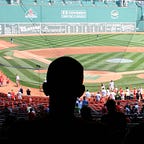What Happens When Some of the Best Baseball Players in Country Travel the World
The Great Baseball Tour of 1888: Albert Spalding’s mission to make baseball more than just America’s sport
Albert Goodwill Spalding achieved a lot throughout his lifetime. First, as one of the best pitchers in professional baseball, and then as a businessman. He was elected into the Baseball Hall of Fame via the Old Timer’s Committee in 1939 and founded the most dominant sporting goods business in America in the late 1800s.
In 1876, Albert Spalding and his brother Walter opened a small athletic equipment store in Chicago. This same year, Spalding was still playing for the Chicago White Stockings (now the Cubs) and would lead the National League in wins (47). It was during this season that he also became the first professional pitcher to win 250 career games. He retired in 1878 with a career record of 252–65, an astonishing .795 winning percentage. He was only 27, but saw the great income differences between being a player and being a distributor. But even after his retirement, Spalding continued to be involved with baseball, this time on the operations side. He was the President of the Chicago White Stockings and eventually he held enough power that it seemed he was behind every decision that the National League made regarding maintaining their attempted monopoly on baseball.
A.G. Spalding & Brothers (now just Spalding) continued to grow. Spalding excelled at running a business and seemed to make all the right marketing and publicity moves. The Spalding became the official ball used by the National League in 1878 when he started supplying the NL with free balls and even gave them a dollar for every dozen they used. In 1979, Spalding expanded and opened a bat factory. As the Spalding brand was growing, the company bought out many of his competitors, but still continued to sell product under their original name to give the illusion of competition. His company continued to flourish and by 1896, Spalding had employed more than 3,500 people and had plants scattered across the eastern half of America. He had also ventured into selling all sorts of athletics goods, from uniforms and sportswear to boats and fishing supplies.
Albert Spalding didn’t just want his company to be the biggest sporting goods brand in the United States, he wanted it to be the biggest brand worldwide. He saw baseball as a business opportunity, one that would get him exactly where he wanted to be. He would organize and fund what came to be know as The Great Baseball Tour of 1888–1889. From the outside, the purpose of the tour was to spread the game of baseball across the world. Spalding however, also wanted to use the tour to open the world up to the baseball products he made and sold. He used the players as ambassadors for both the sport of baseball, and his products.
The offseason tour stopped at 13 countries and on every continent. The two teams that would accompany Spalding were his own Chicago White Stockings, led by Cap Anson, and an all-star team called the All-Americas. The tour set out from Chicago on October 20, 1888 and returned home to a hero’s welcome on April 6, 1889 in New York. The two teams would play each other from Chicago all throughout the western United States. Then they would travel by way of the Pacific Ocean, making stops in Hawaii, New Zealand, an Australia. The intercontinental part of the tour ended in England, but not before they also stopped in Egypt, Rome, Paris, and France. The teams played in front of some of the most recognizable landmarks in each country including on the sand of the Giza Plateau in front of the Pyramids, at the Villa Borghese in Rome, and in front of the still incomplete Eiffel Tower. Throughout their journey, the ball players met distinguished politicians, famous actors, and renowned athletes. All along the way, members of the baseball party collected small keepsakes, detailed menus and special programs, many of which now reside in Cooperstown.
The overall success of the tour is still debated. Come claim that the tour wasn’t the success Spalding advertised it to be. While he praised and publicized the importance of the tour, his critics claim that it was a financial flop, citing that baseball expanded all across the world, but not in the places that Spalding had visited. However, some say that it was thanks to Spalding’s tour that the sport of baseball began to take off in many other different countries. And that the effects from the goodwill from the tour continued to be felt around the globe more than a century later.
Either way, the tour produced some iconic images of baseball and it’s players all over the world. This tour exemplifies baseball as a sport that is truly America’s past time, and something that is more than just a sport for so many people. Albert Spalding used baseball to build an empire, one that still stands today.
#JoinTheHunt for more baseball treasures
